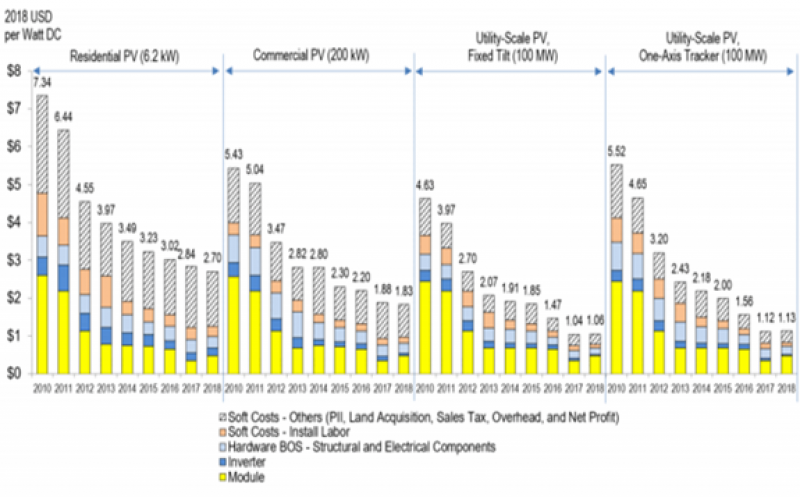JinkoSolar's shift towards mono-crystalline solar products is starting to pay off.
JinkoSolar's mono-crystalline products and leading cost structure should allow the company to further diversify to markets outside of China.
While JinkoSolar has performed well as of late, the company is still under the threat of worsening US-China trade relations.
JinkoSolar (JKS) has become one of the largest solar manufacturers in the world. The company has recently seen its share prices surge as a result of improving financials. In an industry where even top manufacturers like SunEdison routinely collapse as a result of extreme competition, JinkoSolar's rise is impressive. Despite the US-China trade war, JinkoSolar continues to experience success.
JinkoSolar's move towards higher efficiency solar products has been key to the company's recent success. By differentiating from lower efficiency commodity manufacturers, JinkoSolar is improving its long-term prospects. JinkoSolar's strong Q3 further validates the company's move towards high-quality mono-crystalline products. The solar industry may be entering a new phase where high-tech manufacturers have a noticeable advantage over commodity manufacturers.
Technological Transition
The solar industry has long been dominated by cheaper low efficiency manufacturers. This dynamic may be changing as the industry appears to be transitioning from multi-crystalline products to mono-crystalline products. The current trend of industry consolidation indicates that solar panel quality and reliability are becoming more important factors for consumers. This, in part, explains why JinkoSolar has been successful in its transition to mono-crystalline solar products.
Mono-crystalline panels have higher efficiency rates than multi-crystalline panels and thin-film panels. This is not surprising as mono-crystalline panels use the highest grade silicon in their production. While mono-crystalline panels are more expensive, the higher-quality gained from using mono-crystalline appears to be worth the cost.
Moreover, mono-crystalline panels allow for more flexibility in accessing different solar markets. Given that smaller solar projects have disproportionately high soft costs like installation, higher efficiency mono-crystalline panels holds an advantage on this front. This makes sense as higher efficiency panels simply require less effort to install as they do not take up as much space relative to lower efficiency modules like thin-film panels.
The image below breaks down the costs of different solar segments. Soft costs account for a far bigger percentage of total costs in smaller-scale projects like residential.

Source: National Renewable Energy Laboratory
As solar panel costs continue to plummet, soft costs will make up for an increasingly large percentage of overall costs. This means that higher efficiency mono-crystalline panels could have a significant advantage even in utility-scale solar where soft costs represent a smaller percentage of overall costs. JinkoSolar's recent success with its mono-crystalline panels is evidence that these higher efficiency panels may be the future of solar.
JinkoSolar started producing mono-wafers in 2016, which means that the company already has years of experience with this technology. In Q3, 75% of the company's total shipments consisted of mono-based products. The company is not slowing down its transition anytime soon and expects to have mono-based high-efficiency products accounted for virtually all of it shipments in 2020.
JinkoSolar's high-efficiency technology platform stands in sharp contrast with the common lower efficiency Chinese commodity manufacturer. In fact, the company's N-type cell recently broke a record with a recorded efficiency of 24.58%. Given that JinkoSolar is one of China's largest manufacturers with 3,326 MW of shipments in Q3 alone, the company's technology shift may point towards a larger industry trend.
If the industry continues its shift towards higher efficiency mono-crystalline, it will likely become increasingly hard for newer entrants to compete. Higher barriers of entry brought on by mono-crystalline module manufacturing could relieve some of the downward pressure on margins. As such, it would not be surprising to see JinkoSolar's gross margins improve even more moving forward.